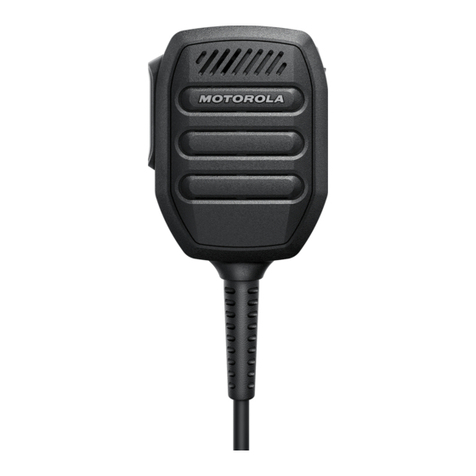
8
English
To start Basic Scanning:
1. Press the Scan/Monitor button briefly. The Scan
icon will appear in the display and the radio will begin to
scroll through the channel and code combinations.
2. When the radio detects channel activities matching the
channel and Sub-Code combination, the radio will stop
scrolling and you can hear the transmission.
3. Press the PTT button within 5 seconds after the end of
the transmission to respond and talk to the person
transmitting.
4. The radio will resume scrolling through the channels
5 seconds after the end of any received activity.
5. Press the Scan/Monitor button briefly to stop scanning.
To start Advanced Scanning:
1. Set home channel’s Sub-Code to “zero” or off.
2. Press the Scan/Monitor button briefly. The Scan
icon will appear in the display and the radio will begin to
scroll through the channels. No Sub-Codes will filter what
is heard.
3. When the radio detects channel activities with any code
(or no code), it stops scrolling and you can hear the
transmission. Any Sub-Code that may be use by other
party will be detected and displayed.
4. To respond and talk to the person transmitting, press the
PTT button within 5 seconds after the end of the
transmission.
5. The radio will resume scrolling through the channels 5
seconds after the end of any received activity.
6. Press the Scan/Monitor button briefly to stop scanning.
Note:
1. The transmission will be on the “Home Channel” if you
press the PTT button while the radio is scrolling through
inactive channels. You may press the Scan/Monitor
button to stop scanning at any time.
2. You may immediately resume the scan by briefly pressing
or if the radio stops on an undesired transmission.
3. You may temporarily remove that channel from the scan
list by pressing and holding or for 3 seconds if the
radio stops repeatedly on an undesired transmission. You
may remove more than one channel this way.
4. Turn the radio off and then turn back on, or exit and re-
enter the scanning mode by pressing Scan/Monitor to
restore and remove channel(s) to the scan list.
5. You cannot remove the “Home Channel” from the scan
list.
6. In the Advanced Scan, the detected code will only be
used for one transmission. You must take note of that
code, exit scan, and set the detected code on that
channel to permanently use.
Warranty Information
The authorized Motorola Solutions dealer or retailer where
you purchased your Motorola Solutions two-way radio and/or
original accessories will honour a warranty claim and/or
provide warranty service.
Please return your radio to your dealer or retailer to claim
your warranty service. Do not return your radio to Motorola
Solutions.
In order to be eligible to receive warranty service, you must
present your receipt of purchase or a comparable substitute
proof of purchase bearing the date of purchase. The two-
way radio should also clearly display the serial number. The
warranty will not apply if the type or serial numbers on the
product have been altered, deleted, removed, or made
illegible.
MN004538A02.book Page 8 Saturday, July 24, 2021 6:14 PM





























